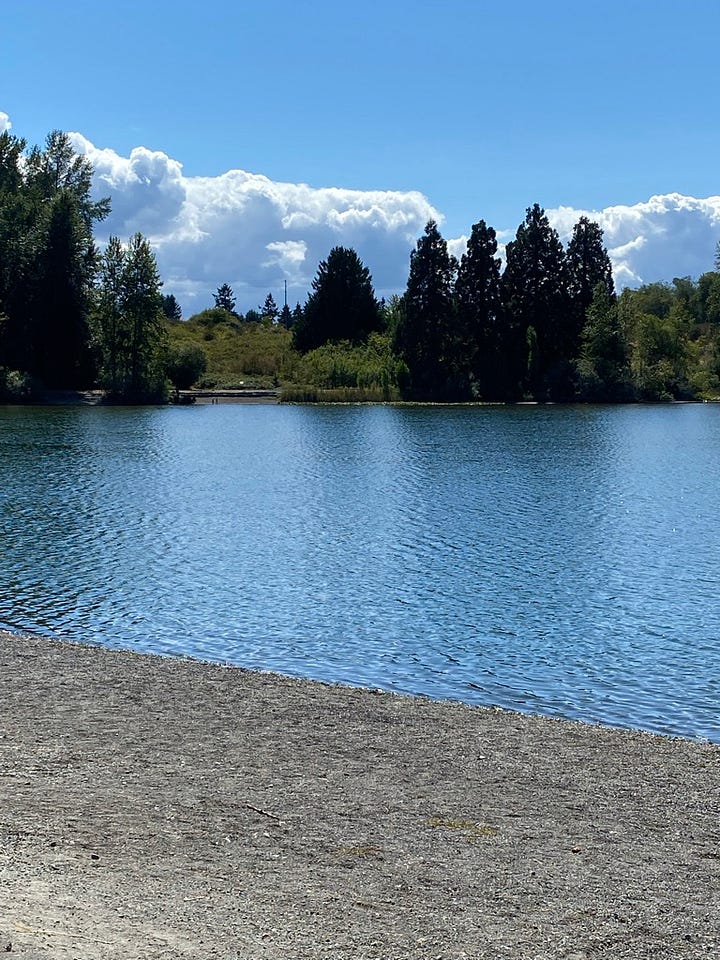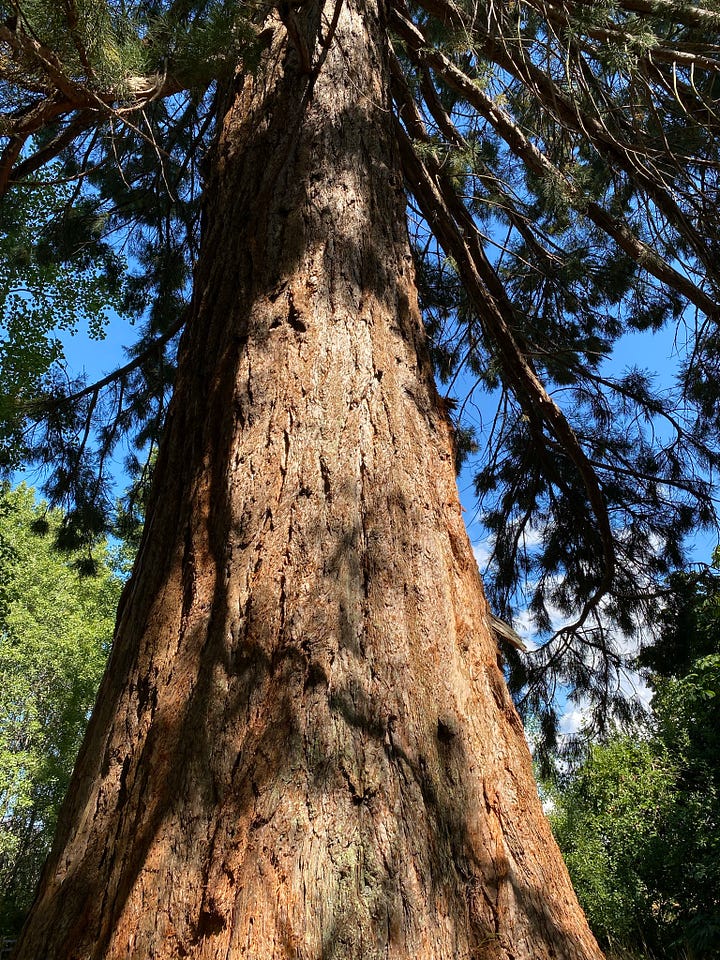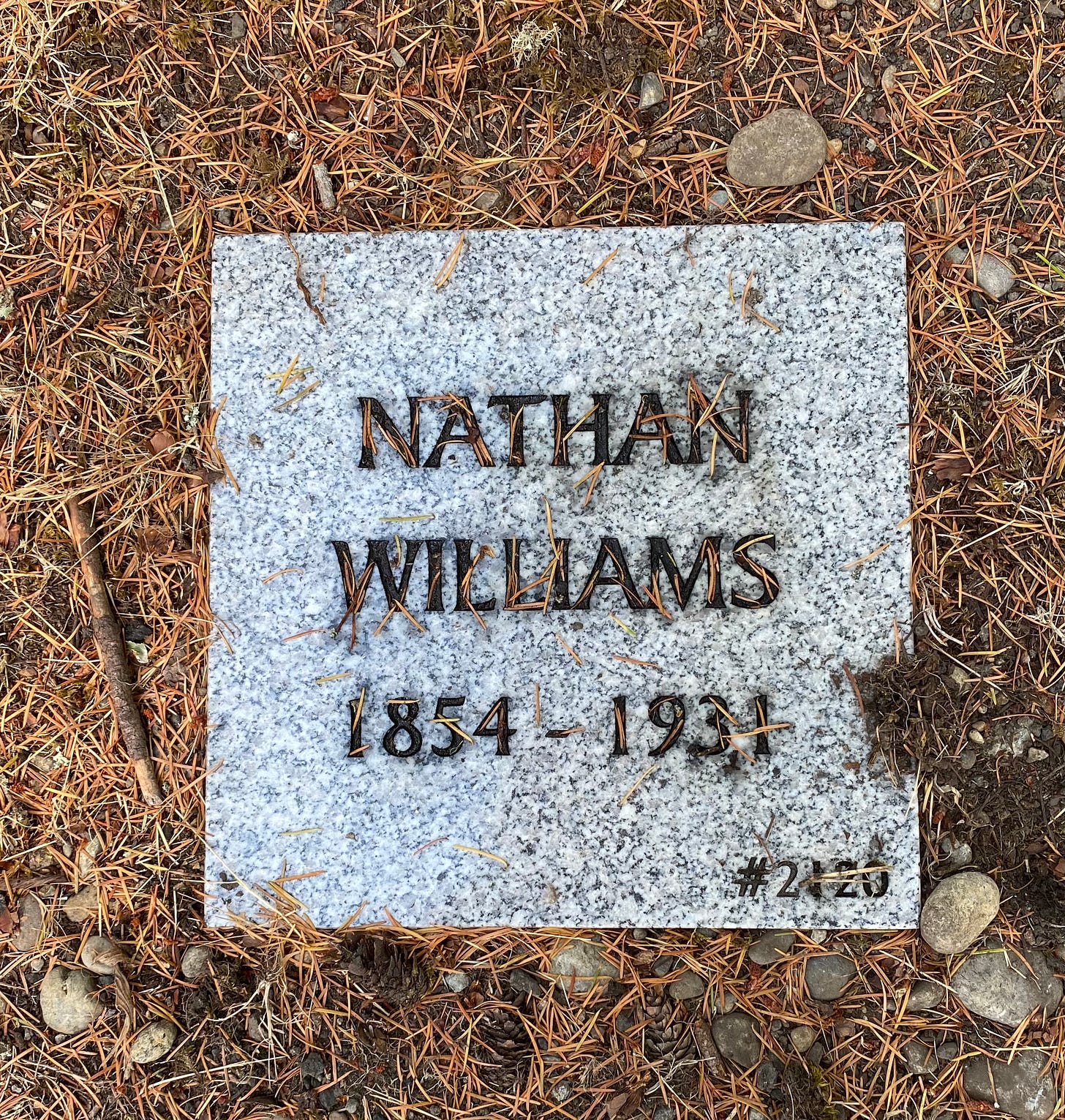Yesterday I posted a salvaged piece titled God Speaks in a Cemetery. As I have been sorting through the hundreds of documents on my computer I am aware of how significant that day at the cemetery was. That day was a pivotal point because I understood my purpose for writing the book that would become Trauma in the Pews. I was speaking on behalf of all who suffered from the impact of trauma and other forms of mental illness.
During the editing process, I removed much of what was clearly my personal processing—condensing what I learned through the processing into insights and illustrative storytelling. Without doing this, the book would have been another memoir and would not have had the impact that it has had. I am grateful for those who guided me in this process.
When the section was being considered for inclusion in the book, it revealed that Nathan was my husband. I decided against this—though Scott was fine with it—because the story would be less impactful if church leaders understood that I was writing about my husband. That frustrated me, but none could deny that I was correct. The cemetery markers as the source of the names in the stories was also lost.
It was rather uncanny that I found this piece at the same time that the story broke concerning a video "apology" created by a congresswoman walking in a cemetery mocking those who found her response to a query about Medicaid cuts offensive (“Well, we are all going to die.”)
Our responses to being surrounded by graves stand in stark contrast to one another. She clearly did not hear the cries of those who suffered tragic unnecessary deaths call out from the graves. I was broken by the call for salvation from someone who had no sorrow for those who would die without the care they could and should have received.
I had devoted the day to continue writing the story, Green Door Antique Store, but got stuck in the cemetery instead. I was not finished honoring those who—without being able to access the necessary mental health care—spent their lives and died in an asylum. Come walk through the cemetery with me. Yes, everyone is going to die, but the care we give them when they face trials is what defines a faith that is based on caring for our neighbors. We are the hands and heart of God for those who suffer.
The text of the historical marker was included in the article posted yesterday. The second picture is the best I could capture of the diagram of the rows of graves that are in the field in the third picture. Many of the original markers have sunk below the surface and are covered with dirt and grass.
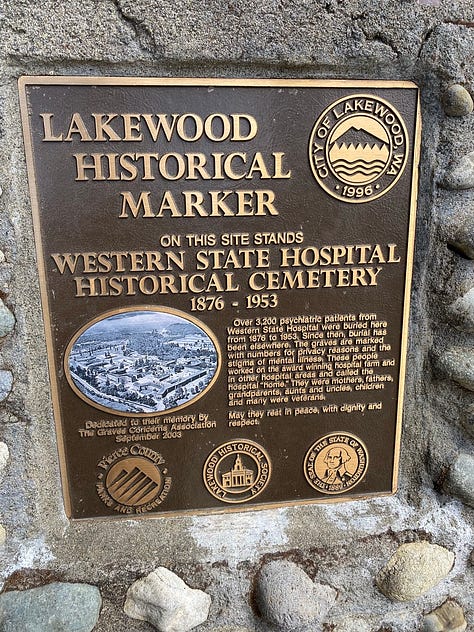
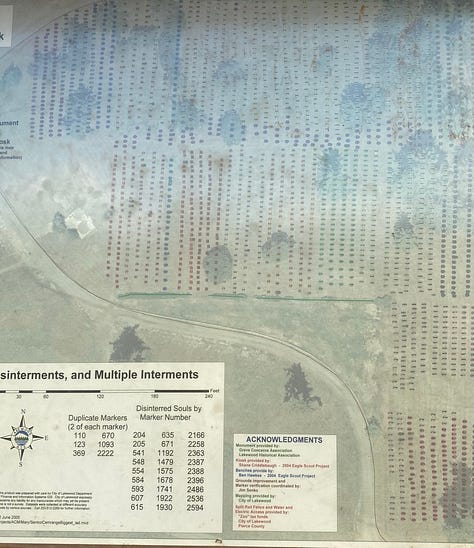

The Grave Concerns Association works to care for the cemetery and replace the numbered markers with markers that include names of those whose identities were not kept secret due to the stigma surrounding mental health.
These are a few of the names I called out that day. Some made it into Trauma in the Pews. Sometimes the publishing process removes the very things that inspire the authors to write in the first place.
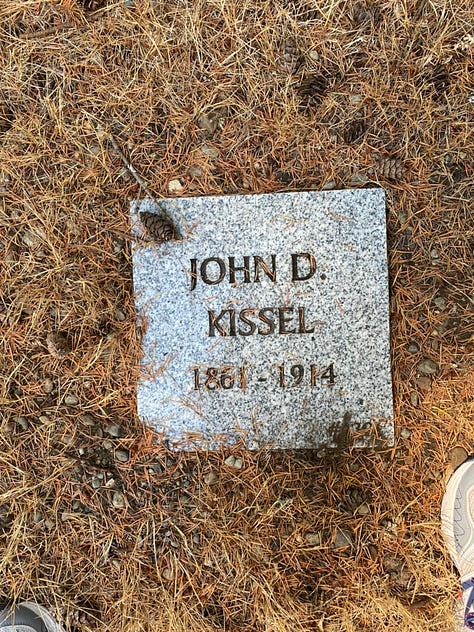
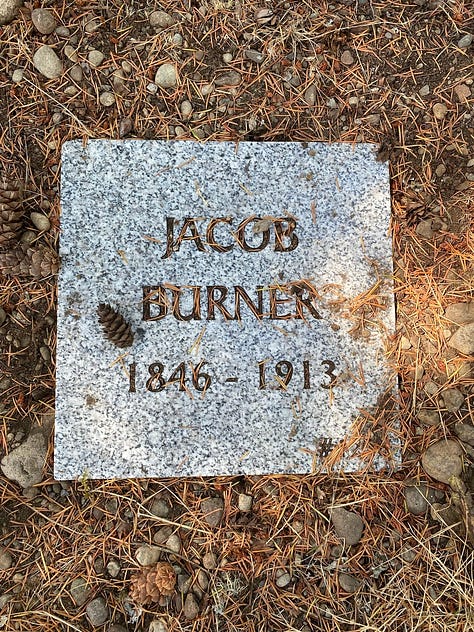
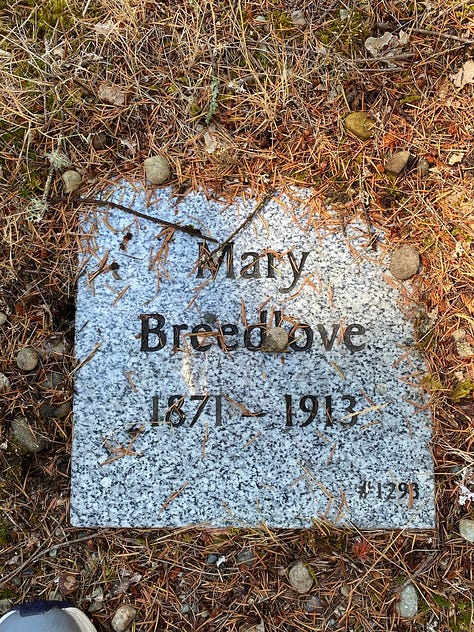
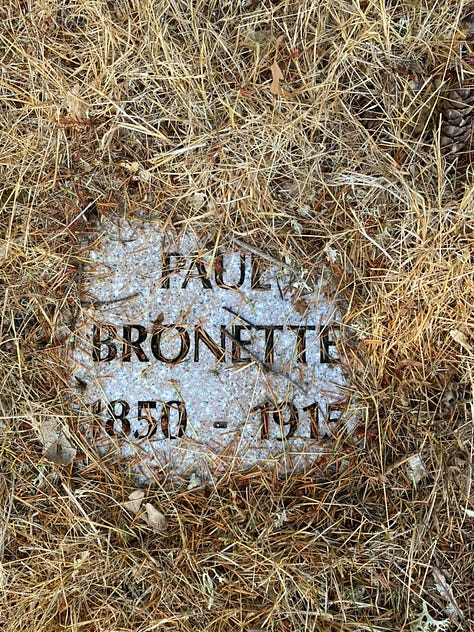
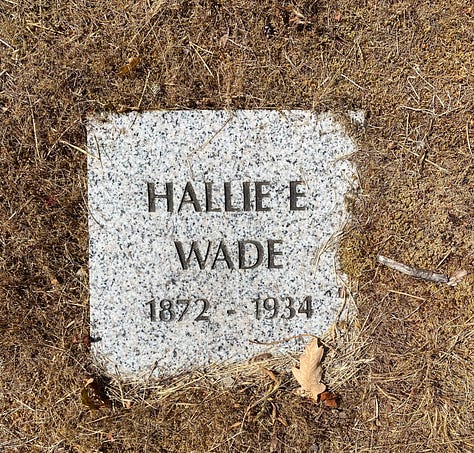
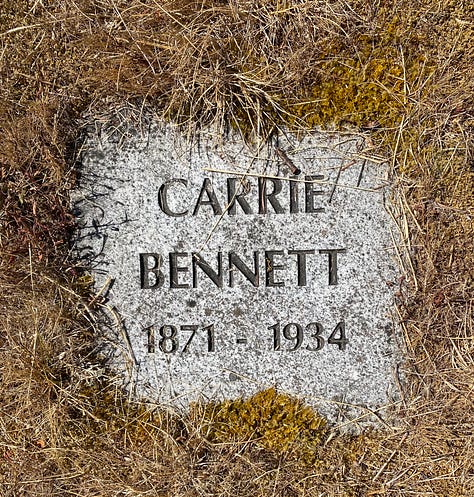
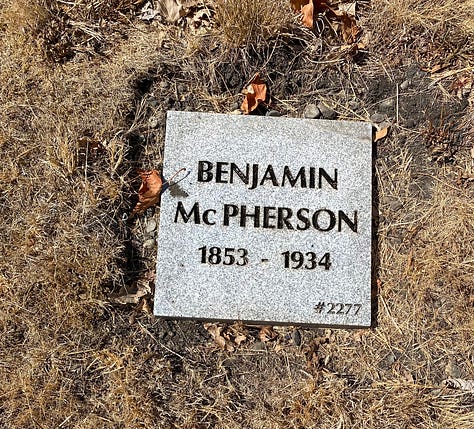


Here lies Nathan Williams (1854-1934) who Scott honored by choosing his name for inclusion in Trauma in the Pews.
Finally, these are the pictures I took while walking around Waughop Lake. If I had not visited the cemetery first, I could not have imagined all those who lived at and planted and cared for the grounds of Western State Hospital for so many years.

